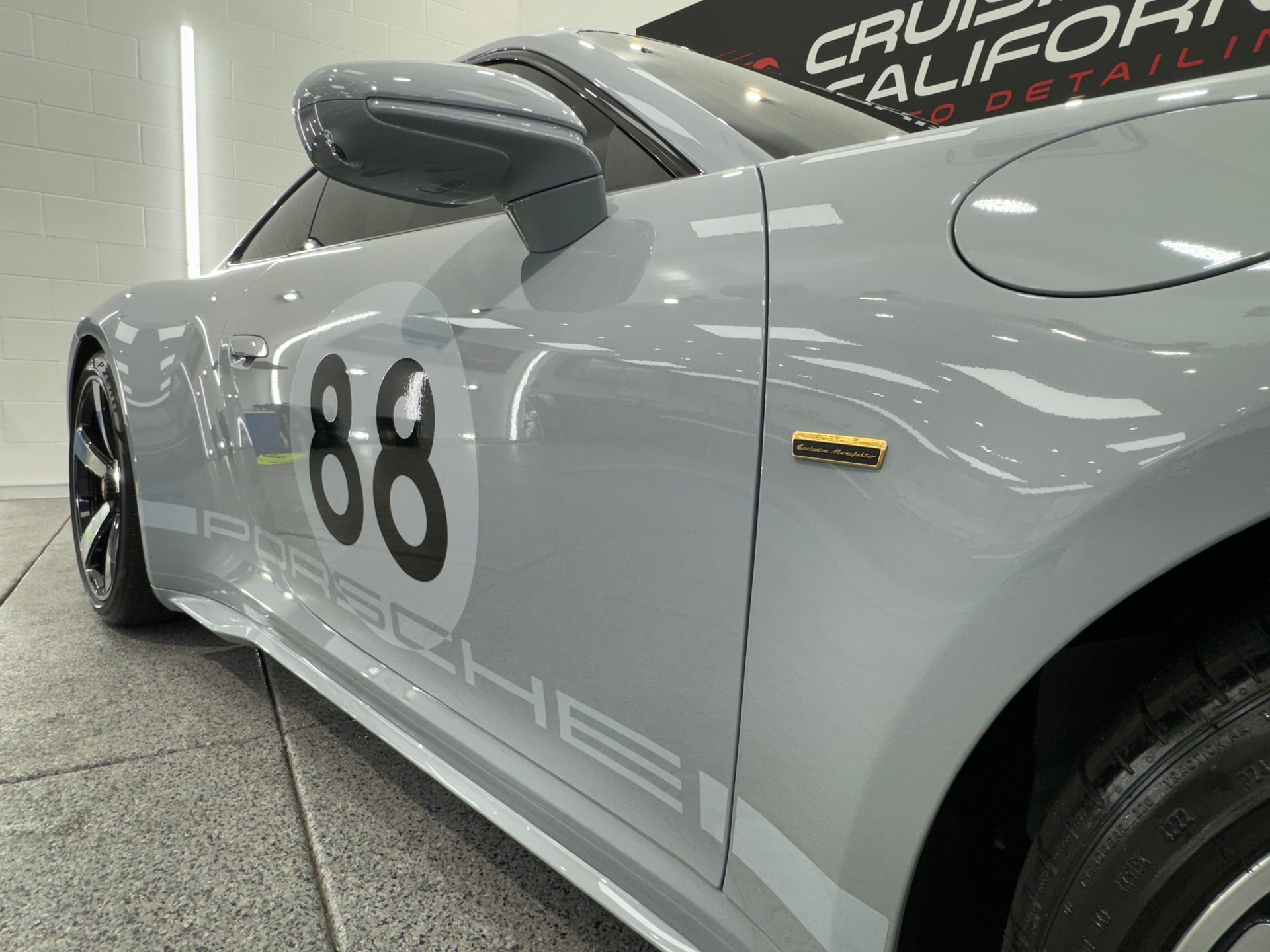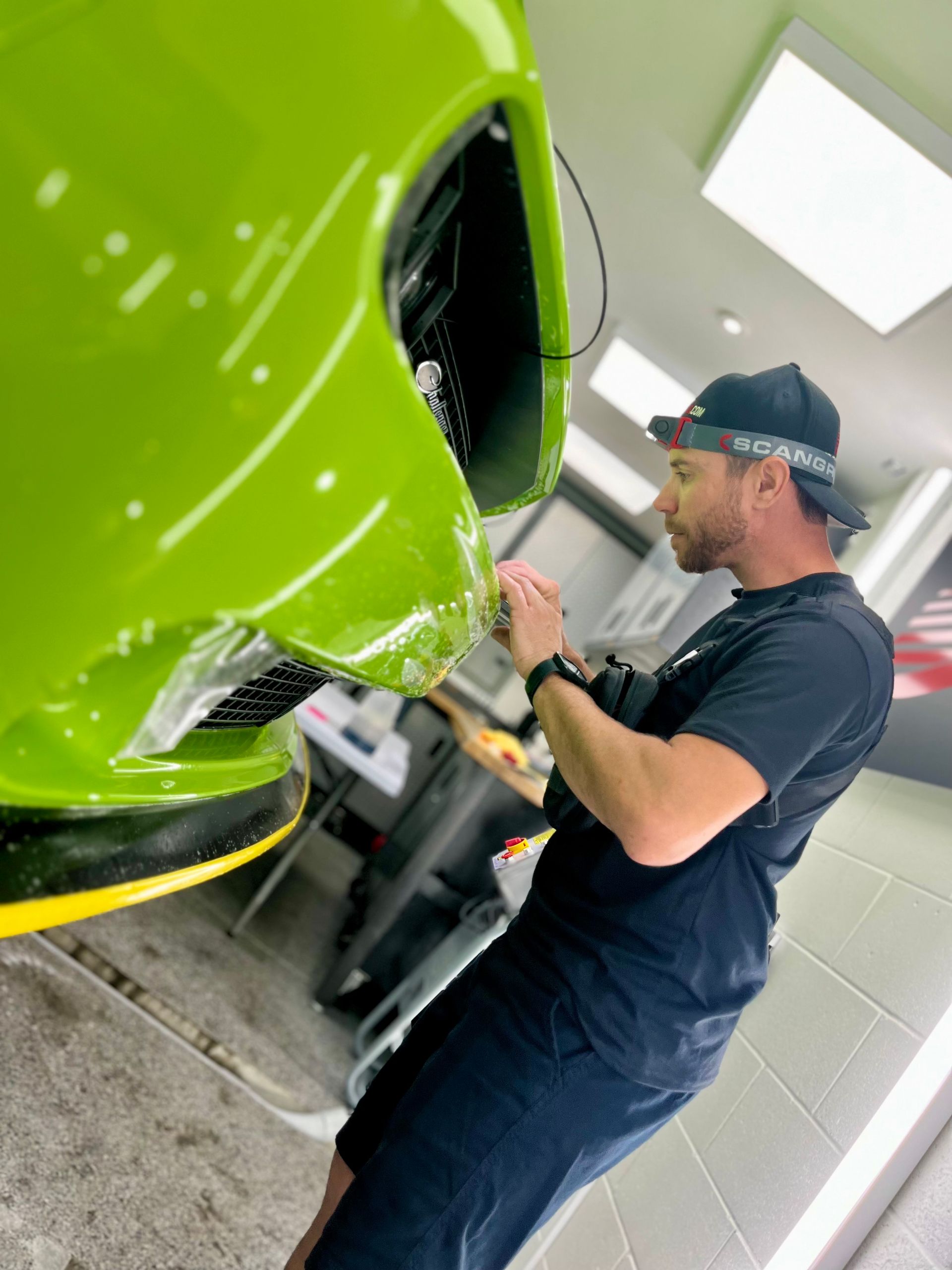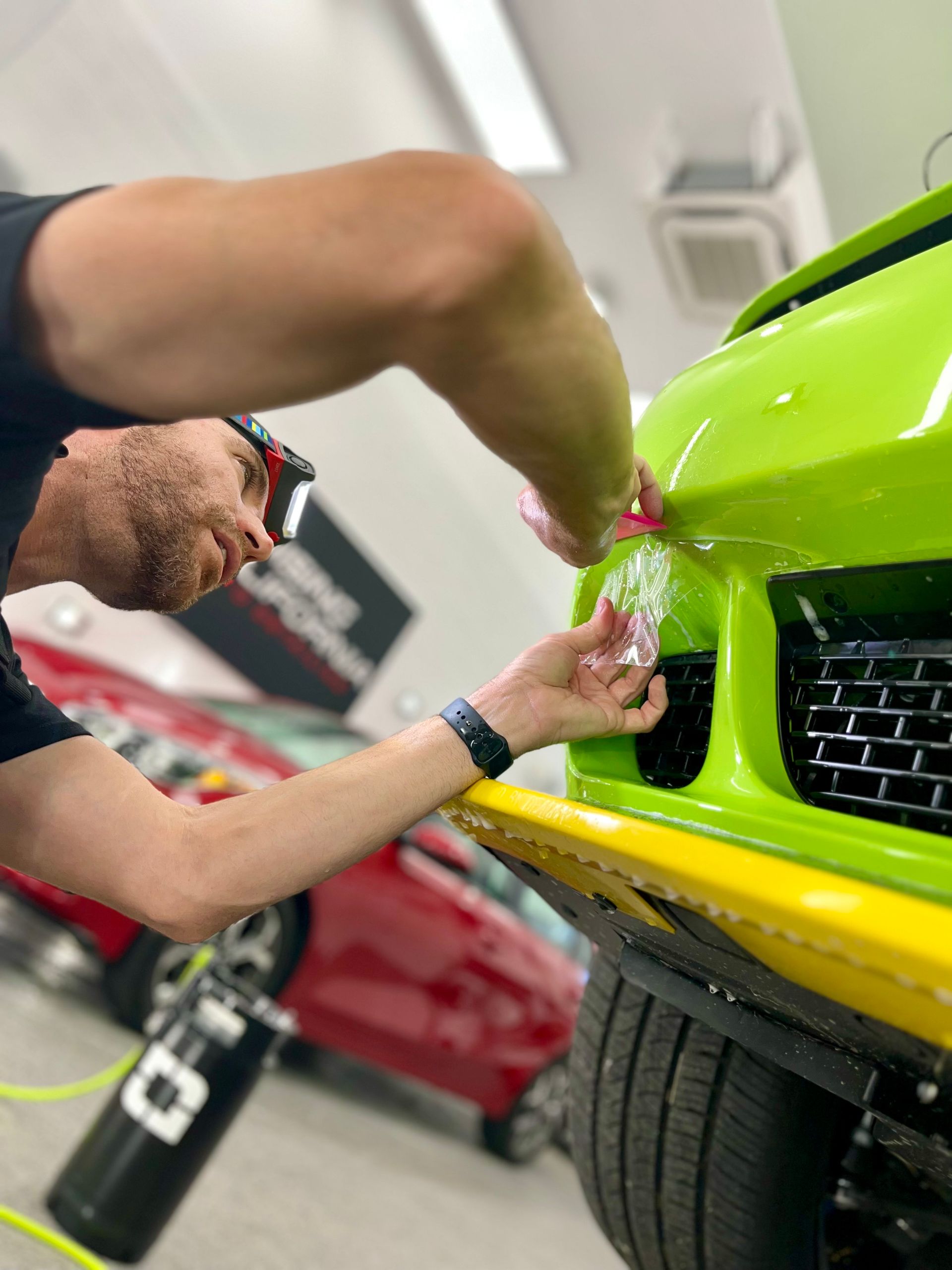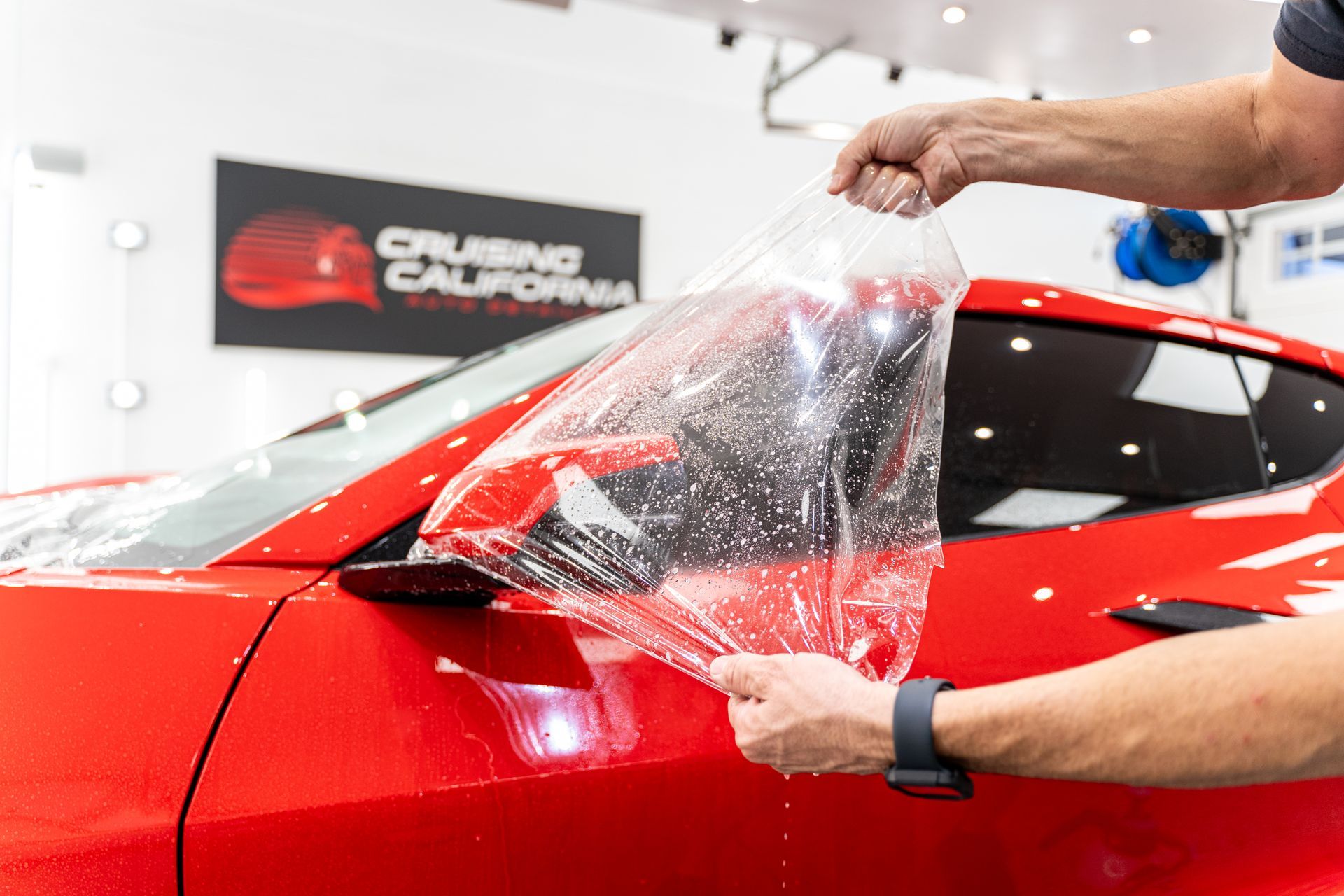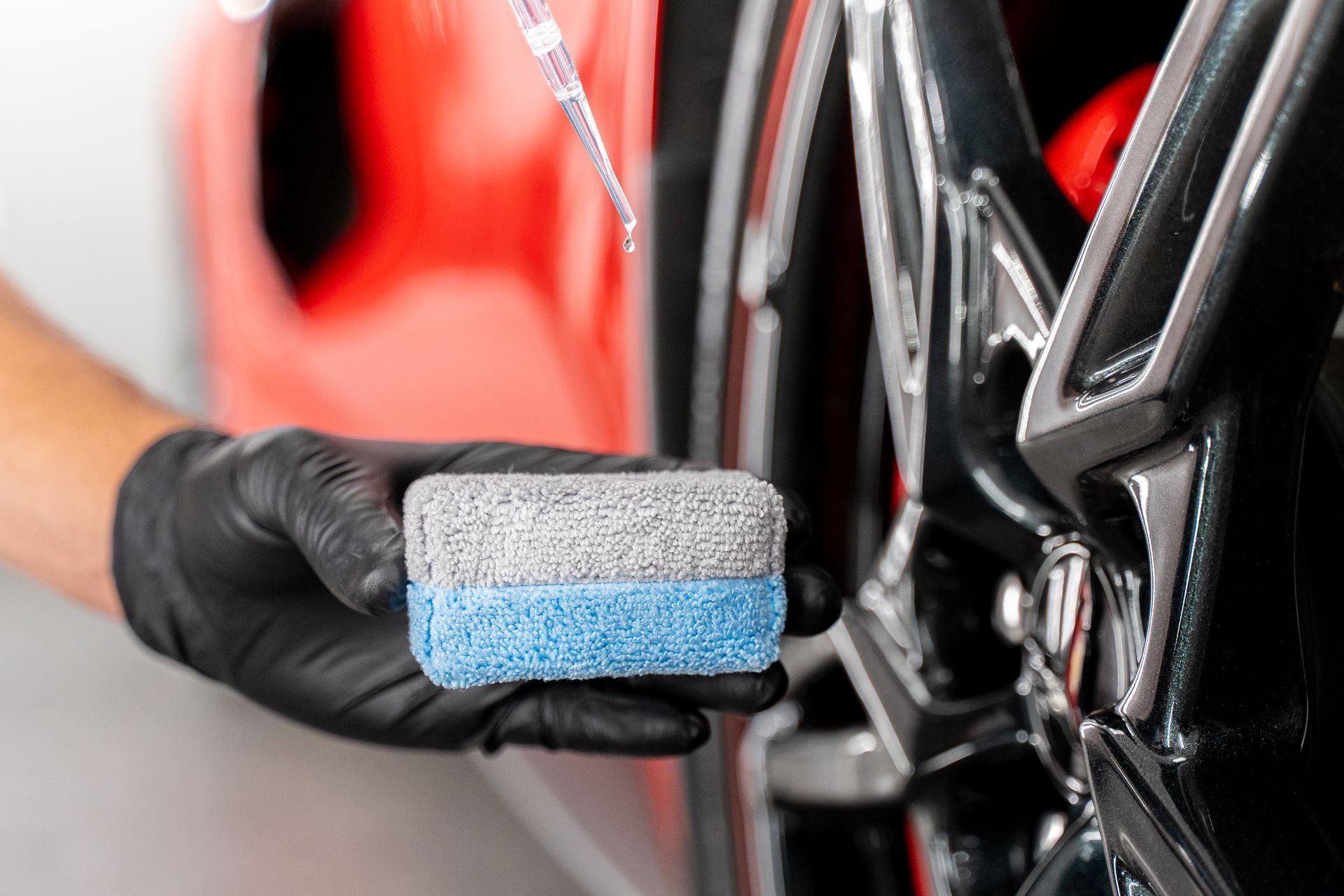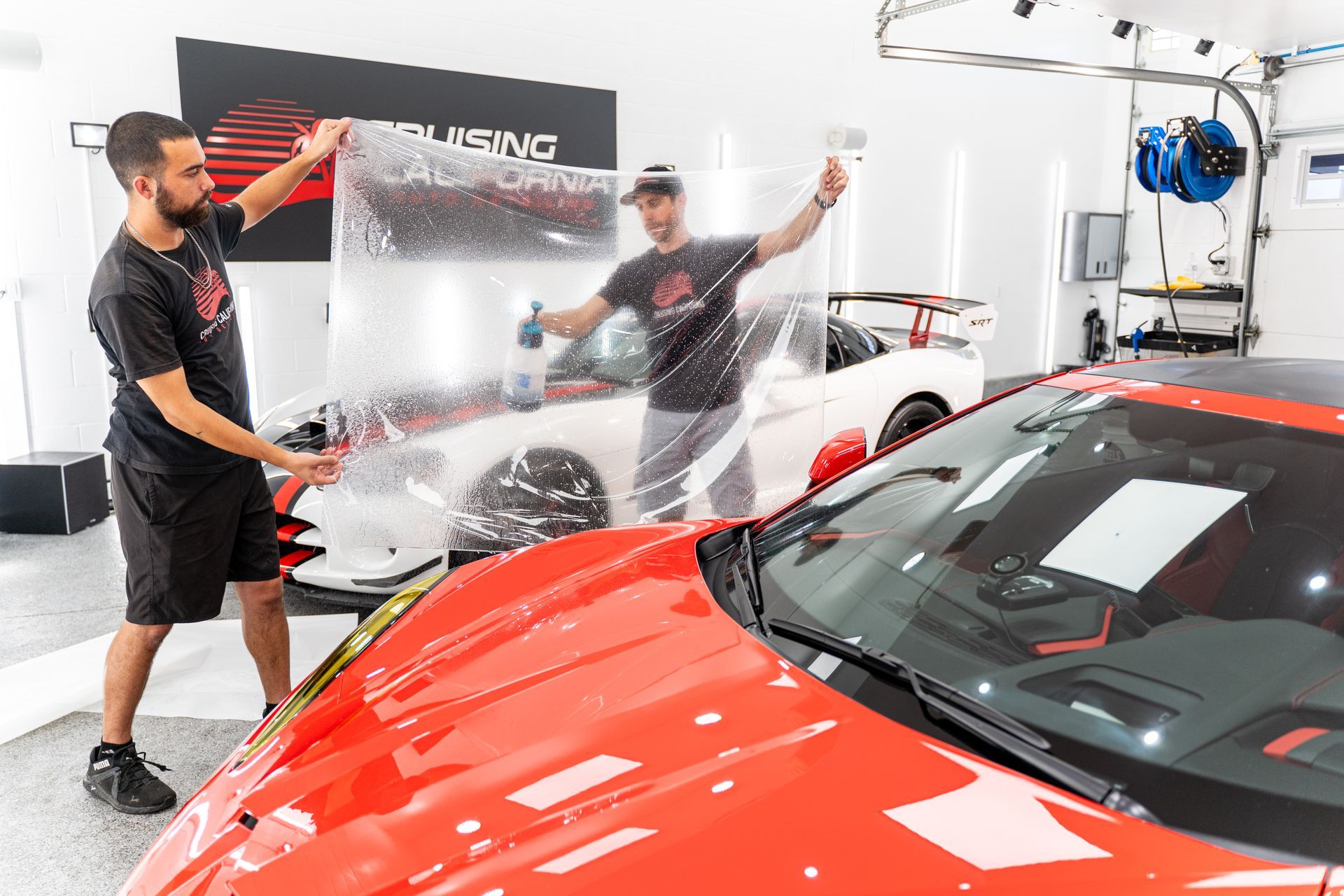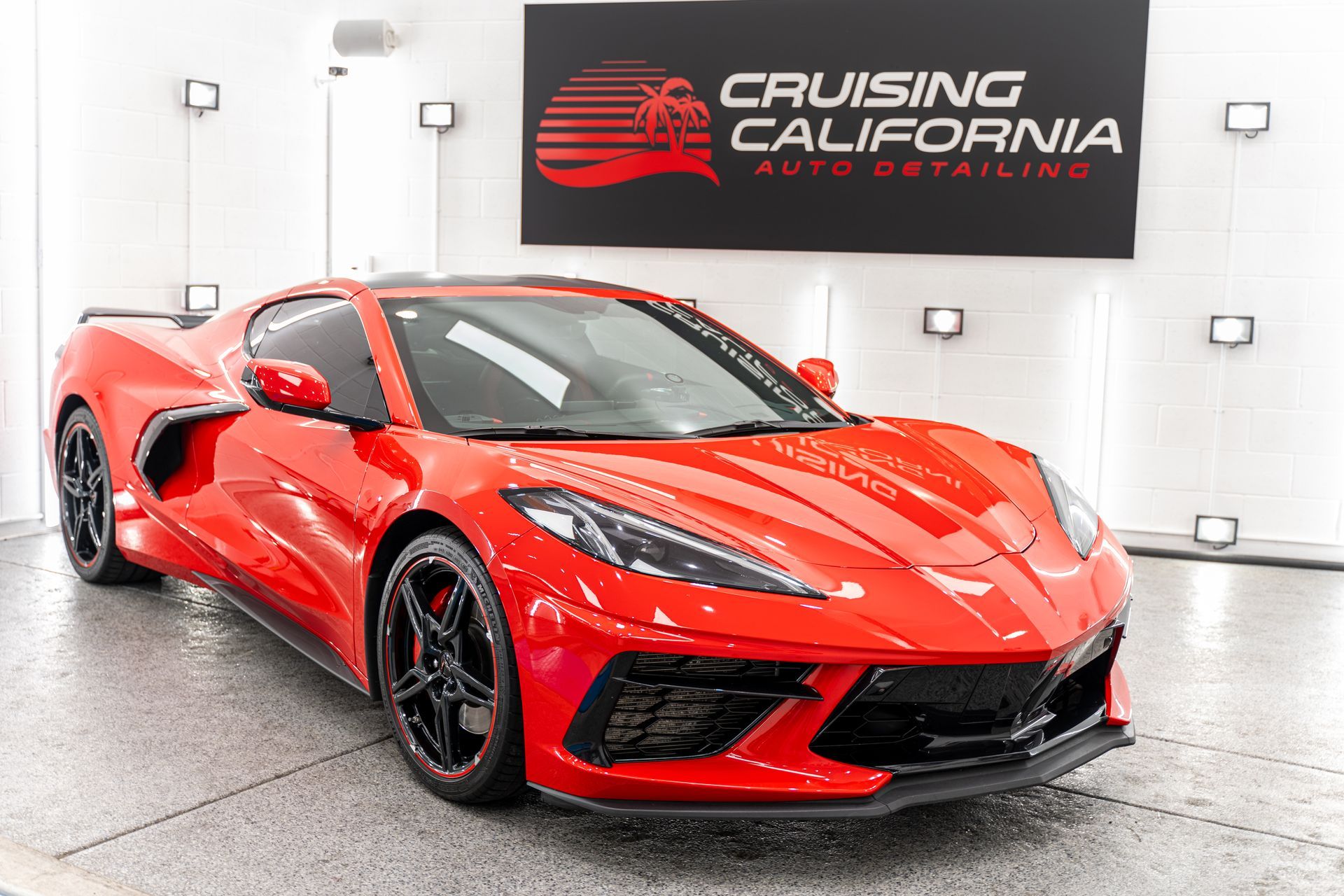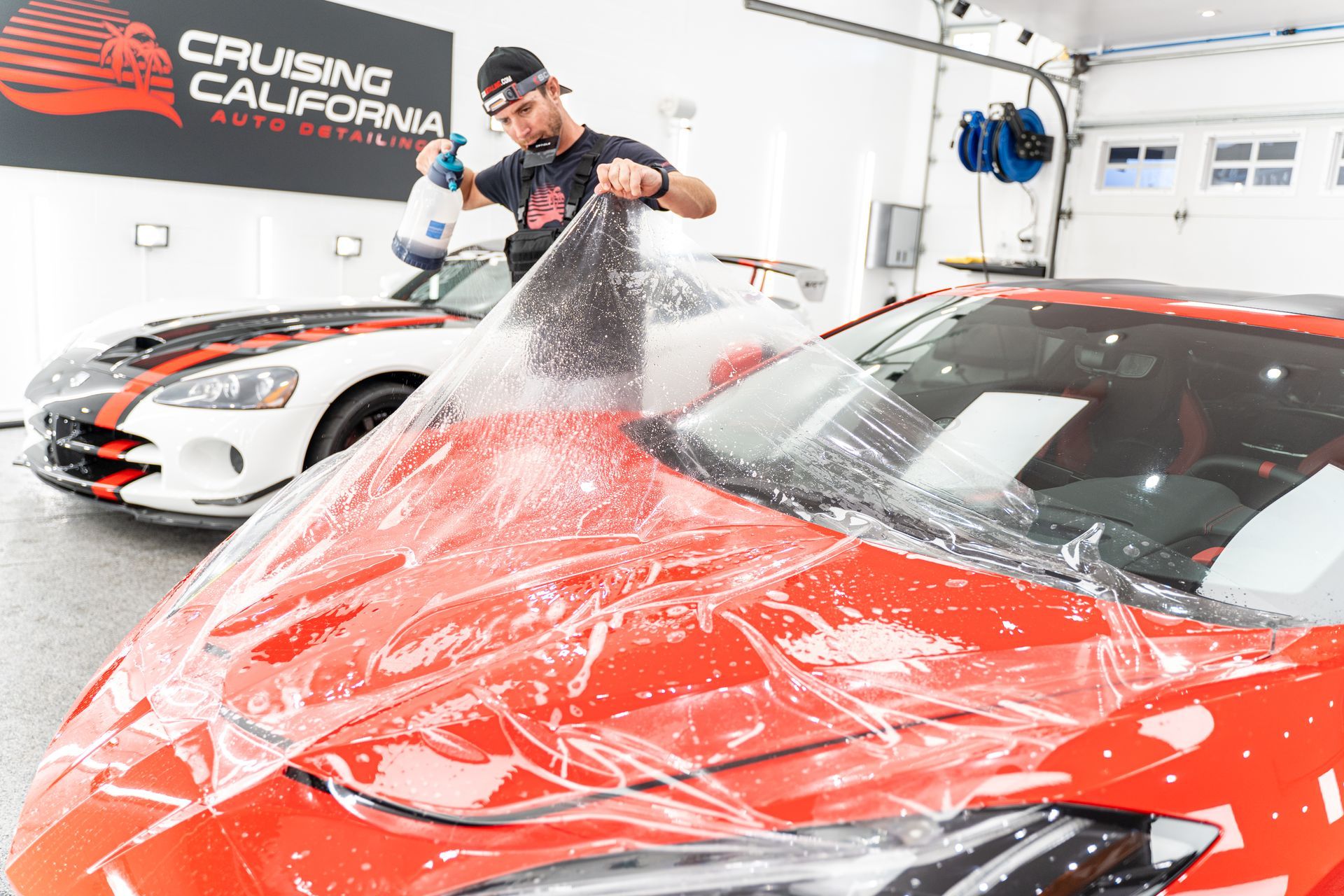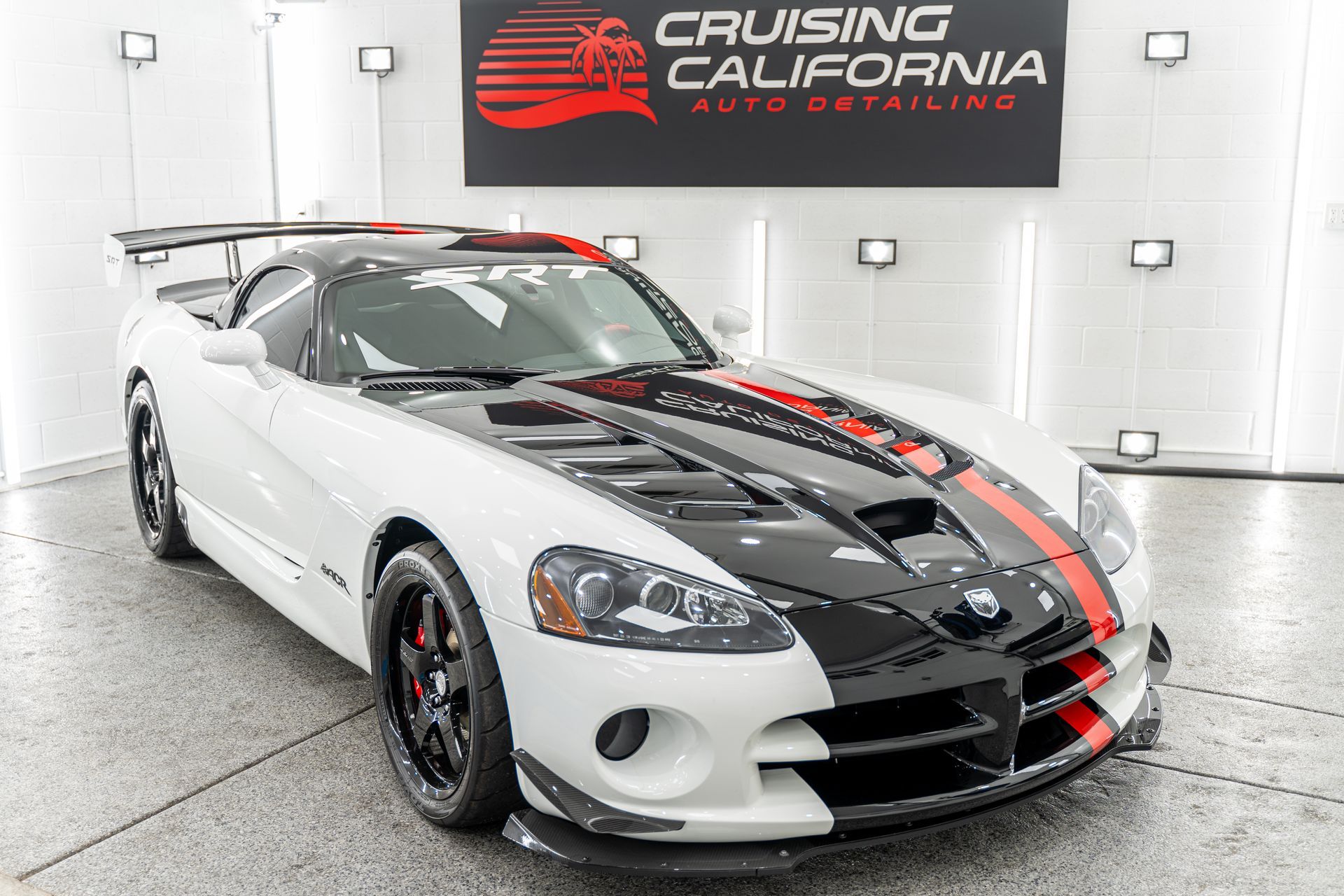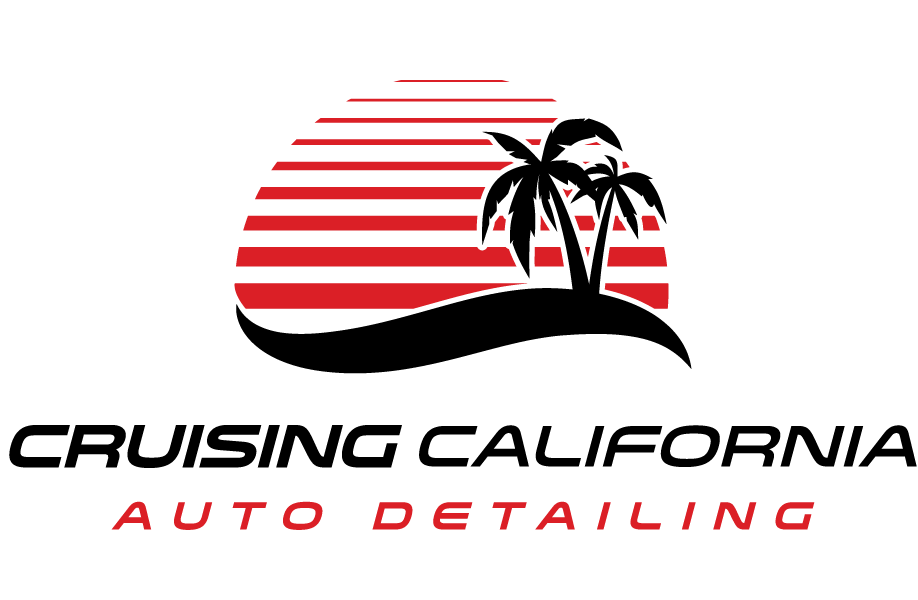When you think about protecting your car, what comes to mind? Maybe a wax job or a nice cover? While those can help, there's a game-changing option out there: paint protection film (PPF). This innovative shield isn't just about keeping your car shiny; it's about defending it from harsh weather like scorching sun, heavy rain, and even icy winds. Imagine this film as an invisible armor that fights against damaging elements while preserving that fresh-off-the-lot look. With so many vehicles facing the relentless forces of nature every day, PPF offers peace of mind for drivers who want their rides to look excellent and last longer.
PPF, or Paint Protection Film, is ideal for areas with intense weather conditions because it provides a robust barrier against environmental damage such as UV rays, rain, and debris. Its durable and hydrophobic properties help repel water and dirt, while its self-healing capabilities ensure that minor scratches disappear over time, keeping your vehicle's paint in pristine condition despite harsh elements.
The Protective Power of PPF
Vehicles endure relentless challenges from nature, including UV rays, hailstorms, rain, and road salt. A paint protection film offers a robust defense, maintaining your car’s appearance and longevity against these elements. Here's why PPF is essential for vehicle owners:
- UV Resistance for Vibrant Colors: A paint protection film blocks harmful UV rays, preventing car paint from fading and cracking under the sun's relentless glare. This ensures your vehicle's color stays sharp and vibrant season after season.
- Self-Healing Technology: Paint protection films also feature self-healing properties that reduce the visibility of minor scratches and swirl marks. Over time, these imperfections fade away, ensuring your car maintains a flawless finish without the need for frequent touch-ups.
- Boosts Resale Value: Cars with high-quality paint protection films retain 10-15% more resale value compared to those left unprotected. Beyond aesthetics, PPF serves as a smart investment, safeguarding the vehicle from cosmetic damage while preserving its overall market value.
- Hydrophobic Protection Against Water Damage: A paint protection film also repels water effectively, reducing water spots and stains during heavy rain. This hydrophobic property also prevents mineral buildup that could deteriorate paint over time, keeping your vehicle clean and pristine longer.
- Anti-Corrosive Shield for Winter Roads: Snow, ice, and road salt are winter's harshest elements, often leading to rust and corrosion on exposed parts. PPF provides an anti-corrosive shield, protecting your vehicle's metal surfaces while preserving its durability in icy conditions.
With paint protection film, you gain UV resistance, self-healing, impact absorption, moisture repellency, and anti-corrosion benefits. This innovative protection not only enhances your car's aesthetics but also ensures durability against nature's unpredictability.
Shielding Against Heat and UV Rays
Vehicles situated in sunny regions endure relentless exposure to UV rays, which can wreak havoc on automotive paint over time. This constant barrage leads not just to fading and discoloration but also compromises the overall integrity of the paint job. This degradation affects both appearance and resale value, making it vital for vehicle owners to take steps to protect their investment.
UV radiation significantly accelerates the breakdown of paint. As a result, vehicles parked outdoors can experience an increase in interior temperatures of up to 30°F (16.7°C). Over time, this leads to a startling reduction in gloss retention—by as much as 50% over five years without protection. Imagine paint protection film as a powerful sunscreen for your car’s paintwork; akin to how sunscreen shields your skin from sun damage, PPF creates a barrier that repels and absorbs harmful UV rays.
To illustrate this further, consider that most modern paint protection film formulations contain UV inhibitors embedded within the film. The film doesn't merely cling to your vehicle; it actively works to shield against ultraviolet light while allowing the beauty of the paint to shine through. Just like applying sunscreen before heading out for a day in the sun, applying PPF can mitigate potential harm before it occurs.
Long-Lasting Durability
One of the most impressive aspects of paint protection film is its resilience. Unlike traditional waxes or sealants that may wear down under harsh conditions, PPF offers a robust layer of protection that can last anywhere from 5 to 10 years, depending on factors like brand and maintenance practices. A study revealed that an overwhelming 85% of PPF users reported minimal wear after seven years, particularly in areas subjected to severe weather conditions. This statistic confirms not just the longevity of high-quality films but also their performance over time.
While the intrinsic properties of PPF play a significant role in overall durability, proper care and routine maintenance contribute substantially. It's critical to clean your vehicle regularly and avoid harsh chemicals that could degrade the film's protective properties. A gentle wash with pH-balanced soap and regular detailing sessions can make a world of difference in keeping your PPF looking and performing its best. Moreover, consider what happens when you invest in a high-quality installation. Films that are applied correctly without bubbles or wrinkles will adhere better and perform longer.
Application and Installation Steps
Installing PPF is a meticulous process that ensures your vehicle's paint is well protected while maintaining a flawless appearance. From preparation to curing, each step is crucial to achieving a long-lasting and seamless finish. Here's how to install paint protection film effectively:
- Thorough Surface Preparation: Begin by cleaning the vehicle’s surface to remove dirt, oil, or debris. Use soap and water followed by a lint-free cloth to ensure a contaminant-free base. A clean surface is like a fresh canvas—any imperfections can affect adhesion and the overall outcome.
- Cutting the Film Precisely: Use a plotter to cut the paint protection film to match your vehicle's exact dimensions, especially for challenging angles and contours. Alternatively, pre-cut kits tailored for specific vehicle models simplify the process and guarantee a perfect fit, saving time and effort.
- Applying the Film with Care: Spray the surface with a solution of water and a few drops of dish soap to allow easy repositioning during application. Start at one end, use a squeegee to smooth out air bubbles, and remove excess solution as you go. Patience is essential here to avoid imperfections that could compromise the finish.
- Drying and Curing the Film: Allow the paint protection film to dry naturally in a clean, dust-free environment. If needed, use a heat gun cautiously to expedite drying, ensuring edges are sealed properly to prevent peeling. Excessive heat should be avoided to protect both the film and paint.
While DIY installation is possible with the right tools and patience, certified professionals bring an eye for detail and expertise that enhances the film's longevity and aesthetics. Their experience minimizes potential mistakes, ensuring a flawless and durable finish. By following these steps, you can maximize the benefits of paint protection film, shielding your vehicle from harsh elements while maintaining its pristine appearance.
Additional Advantages of PPF
A paint protection film offers more than just a shield against intense weather conditions; it provides a range of benefits that enhance your car’s durability and aesthetics. From its self-healing properties to its ability to preserve resale value, PPF is a smart investment for maintaining your vehicle's appearance and longevity.
- Self-Healing Properties: PPF has a remarkable ability to heal minor scratches and swirl marks over time. When exposed to warmth, such as sunlight or a gentle heat source, the film's surface regenerates, allowing daily wear and tear to fade away. This ensures your car maintains its flawless appearance with minimal effort.
- Hydrophobic Surface: The hydrophobic qualities of paint protection film make cleaning effortless by repelling water and dirt. Rain and grime slide off the surface, keeping your vehicle cleaner for longer. This reduces the need for frequent washing and makes maintenance simpler, saving you both time and effort.
- Aesthetic Enhancement: A paint protection film protects your car’s finish—be it glossy or matte—without compromising its natural beauty. It adds an extra layer of shine while preserving the original paint job. For car enthusiasts, this means enjoying both stunning visuals and durable protection.
- Resale Value Preservation: A paint protection film safeguards your vehicle’s original paint from chips, fading, and environmental damage, ensuring it retains its pristine condition. A well-maintained car attracts higher offers during resale, making paint protection film a valuable investment in protecting your car’s long-term worth.
Investing in paint protection film is a practical choice for shielding your car from environmental damage while enjoying added benefits like simplified maintenance and aesthetic appeal. With PPF, you can extend your vehicle’s life and preserve its value, ensuring it remains a source of pride for years to come.
Unparalleled PPF Solutions in El Cajon, CA
Shield your vehicle from scratches, chips, and road debris with CCA Detailing & Ceramic Coating | PPF’s
professional paint protection film services in El Cajon, CA. Our expertly installed PPF provides an invisible barrier that preserves your car’s pristine finish while offering unmatched durability. Using premium materials and precision techniques, we ensure a seamless application that enhances your car’s value and aesthetics. Protect your investment with confidence—schedule your PPF installation today! Call us at (619) 916-6157 to get started!


